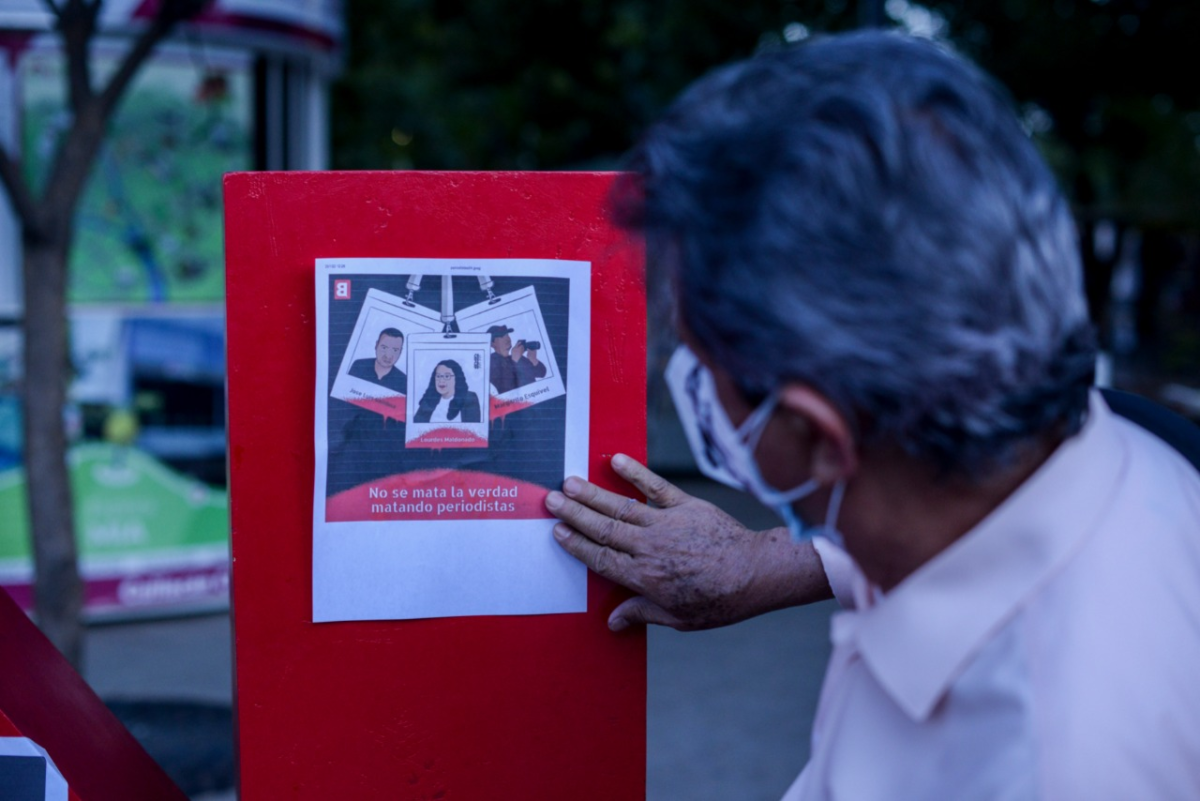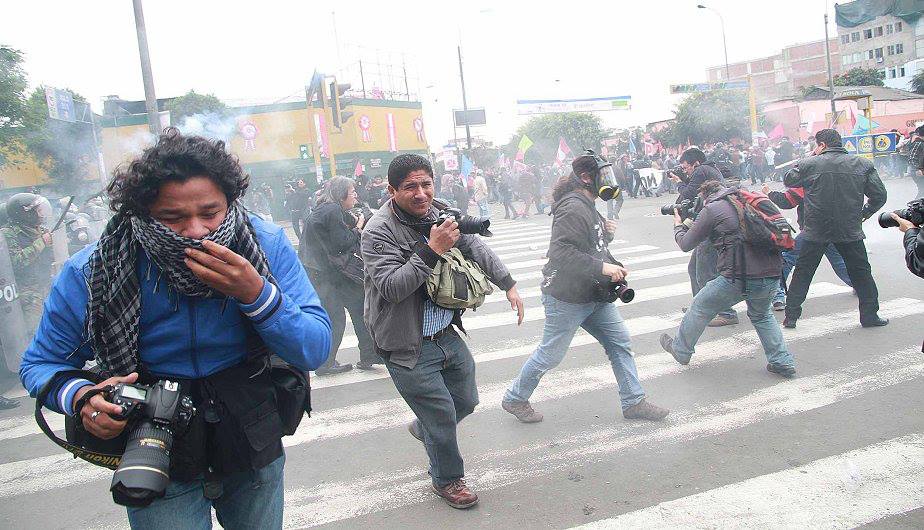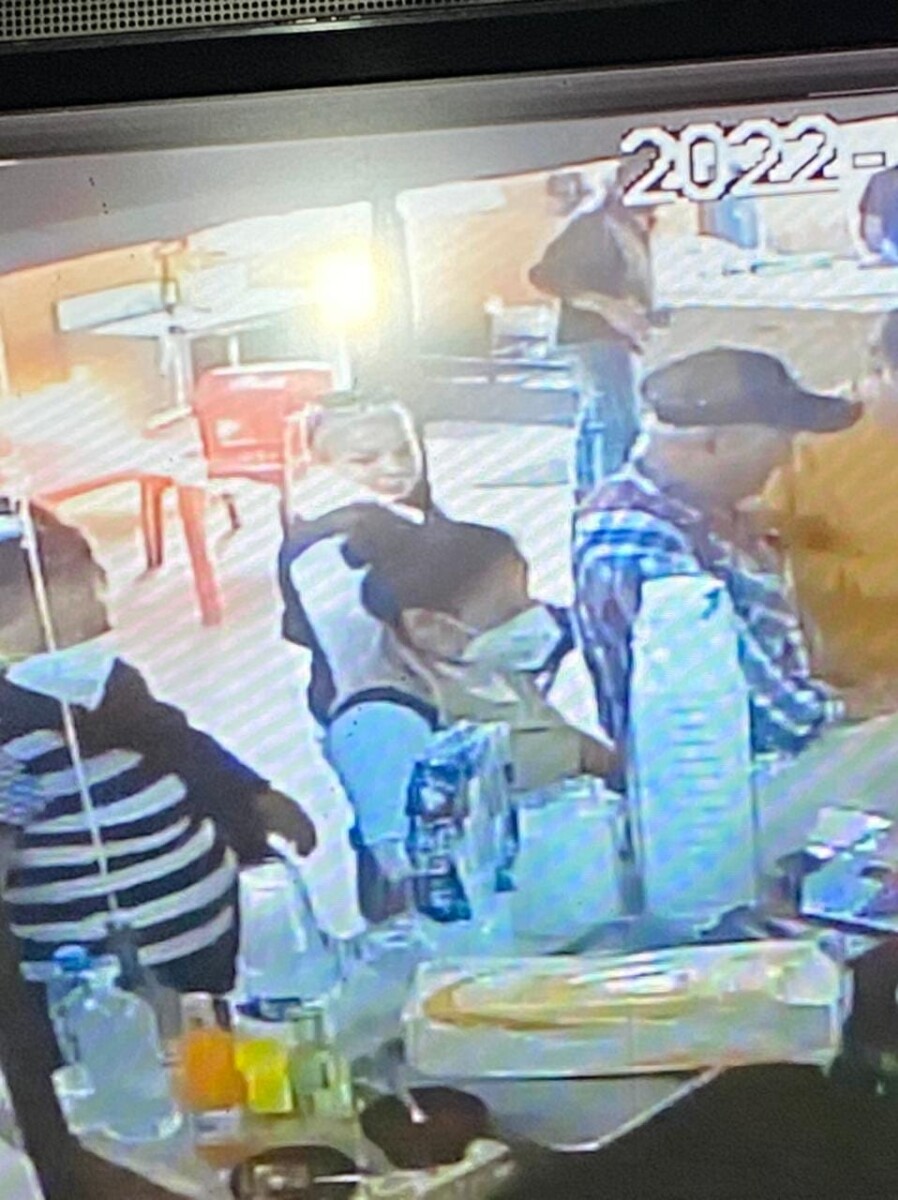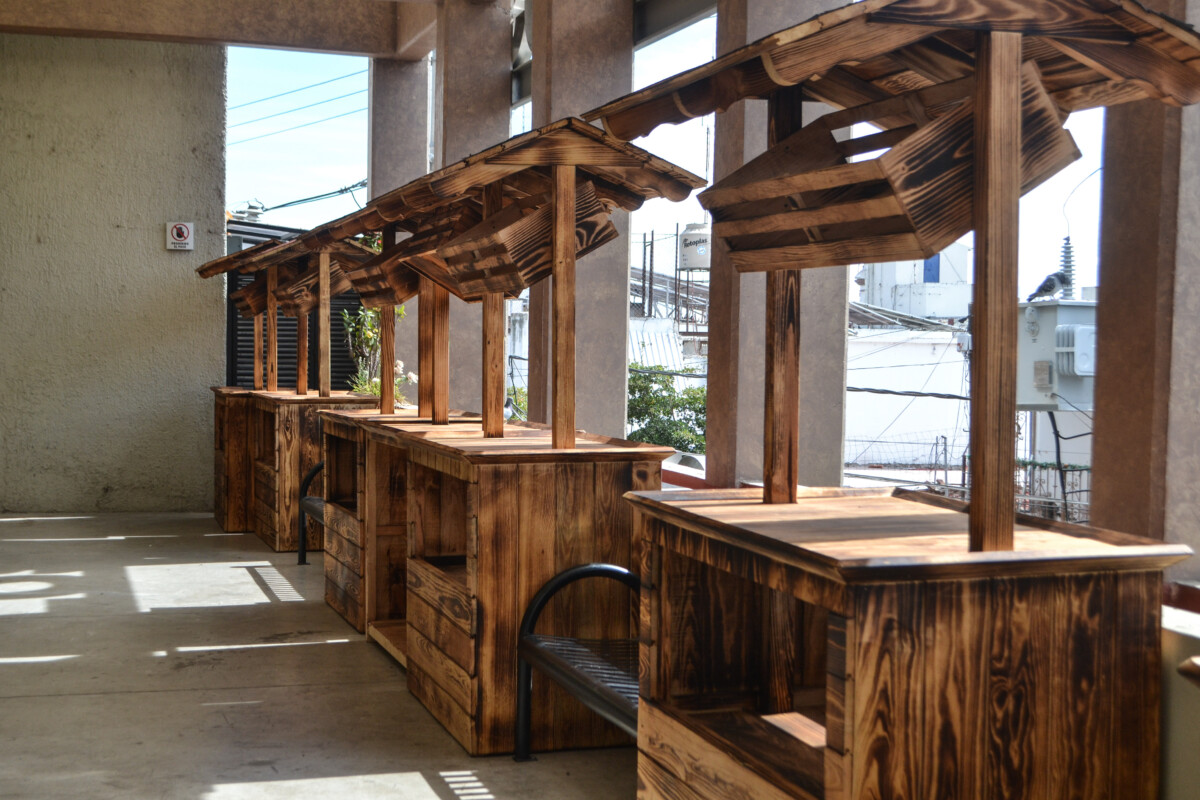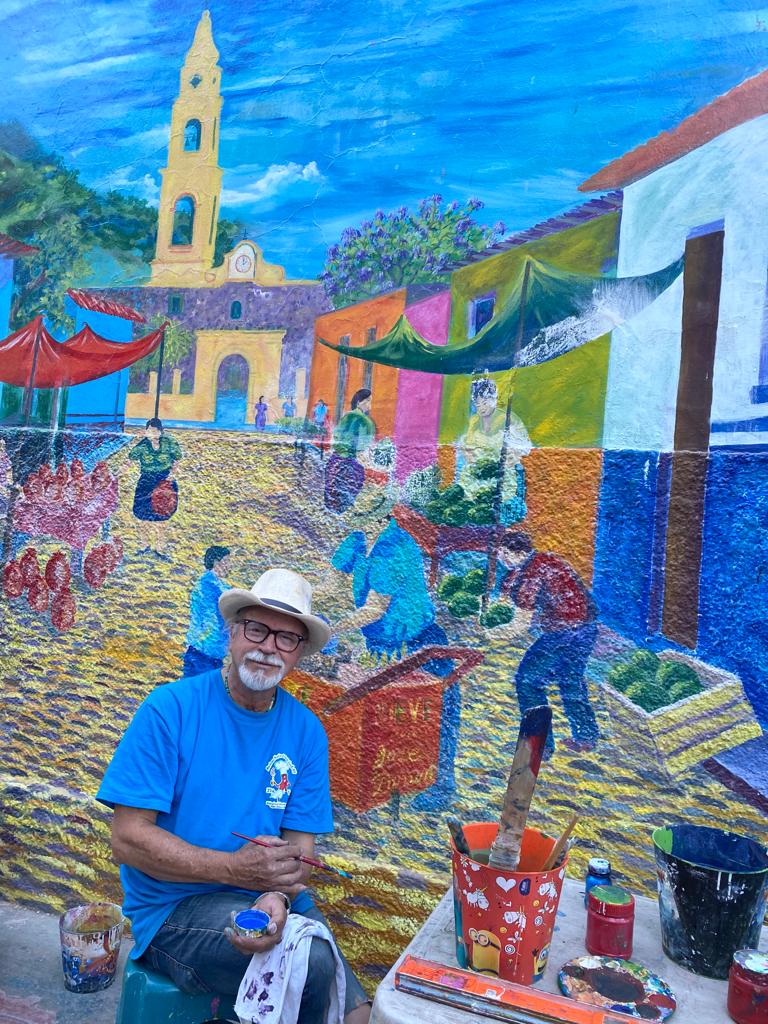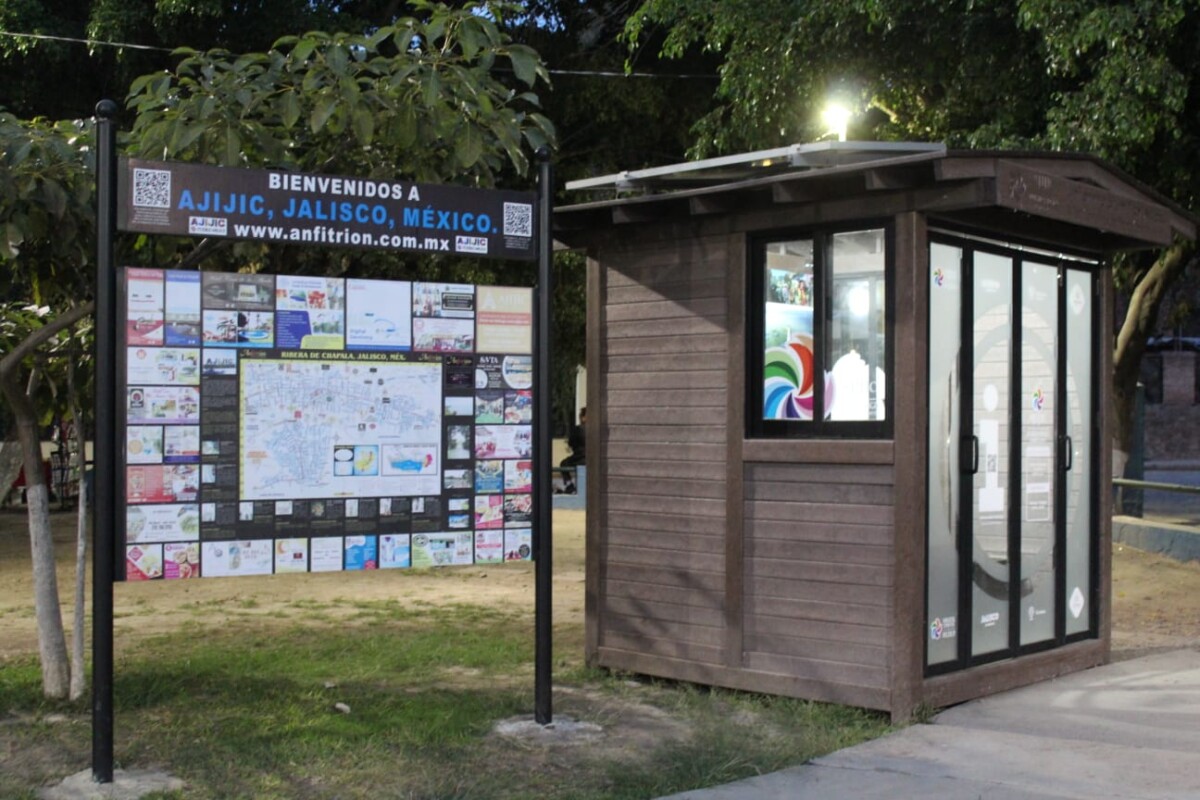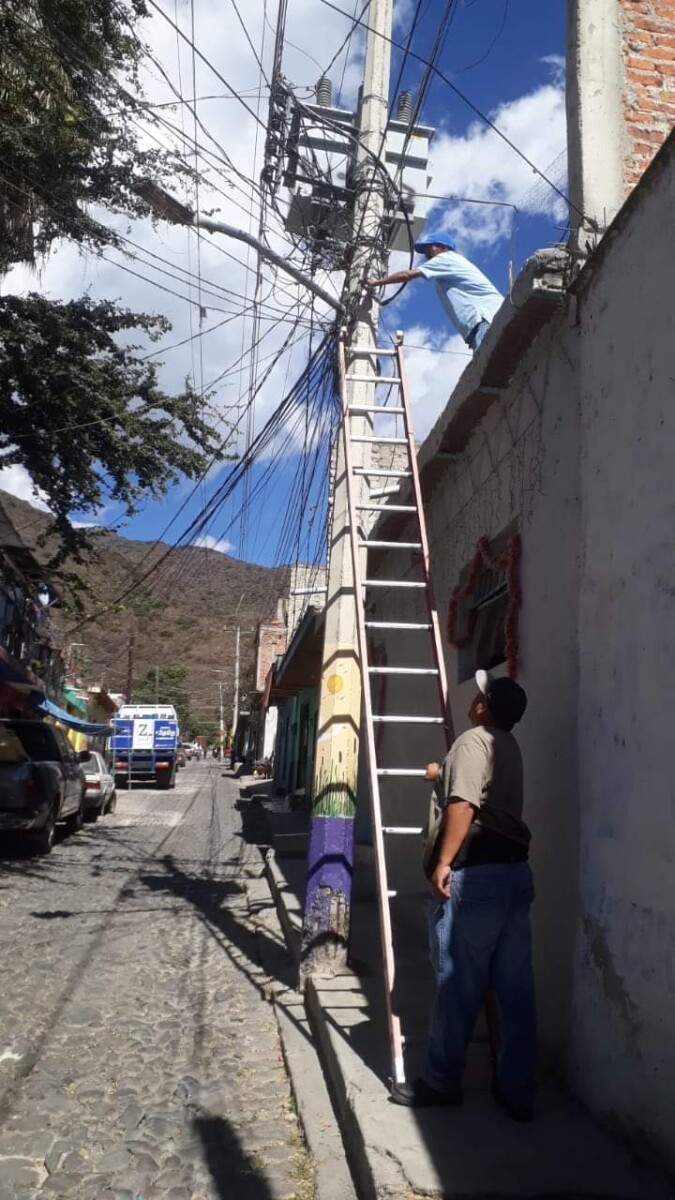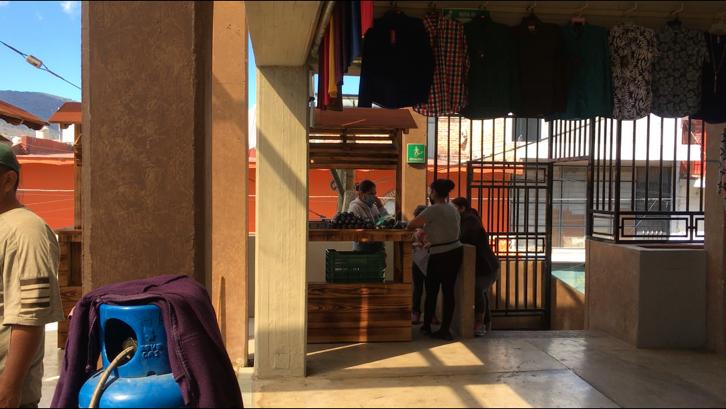en inglés
Funeral chapel built in Ajijic goes unused
Ajijic’s new wake chapel, located to the east of the town, at the intersection of Juan Alvarez and Guadalupe Victoria streets, behind the Bugambilias plaza.
Sofía Medeles.- Four months after being completed the new wake chapel located in the Ajijic delegation is not being used.
The chapel, which cost more than two million pesos (about US$110,000), has only been used once, as of the closing of this edition. Semanario Laguna interviewed 18 people, who explained why they believe the chapel is ignored.
The interviewees, although they disagreed on the usefulness or lack thereof of the wake, agreed that they believe it is not used because of two things: the customs of the people and the location of the chapel, which, they agree, should have been done in a really central space.
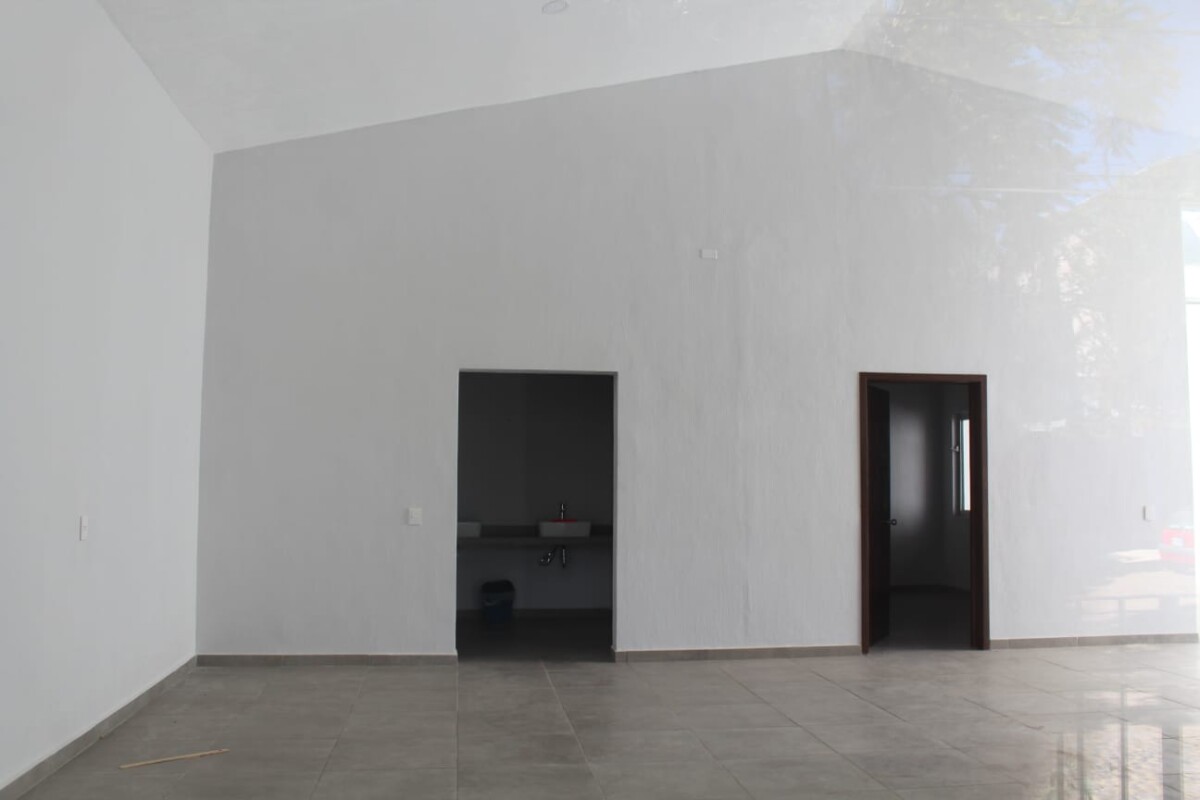
In a tour made by Semanario Laguna, it was possible to observe from the outside that the roof shows water stains.
«Everything was wrong with that project. To begin with, it was not something necessary, several of us thought that there were other priorities. And well, they delivered it half done, without any furniture. It is also in a distant location for many, it is not central at all, considering that the cemetery is on the other side of the town, and the parish is also far away. Besides, it is hardly going to be used, mainly because it is customary to use our own house for the vigil,» commented Lourdes, a resident of Ajijic.
Others disavowed the whole project, asserting that, even if it were not there, things would remain the same in the town. «Nobody knows why they built it, it wasn’t necessary in Ajijic, and many don’t even know about it. In town we all know each other, so for us, it is tradition to hold prayer vigils in our houses. If the houses are small, we support each other among neighbors, or we ask permission to close the street for a prayer vigil, so it doesn’t seem strange to me that the chapel has only been used once,» said Sara, another resident of the town.
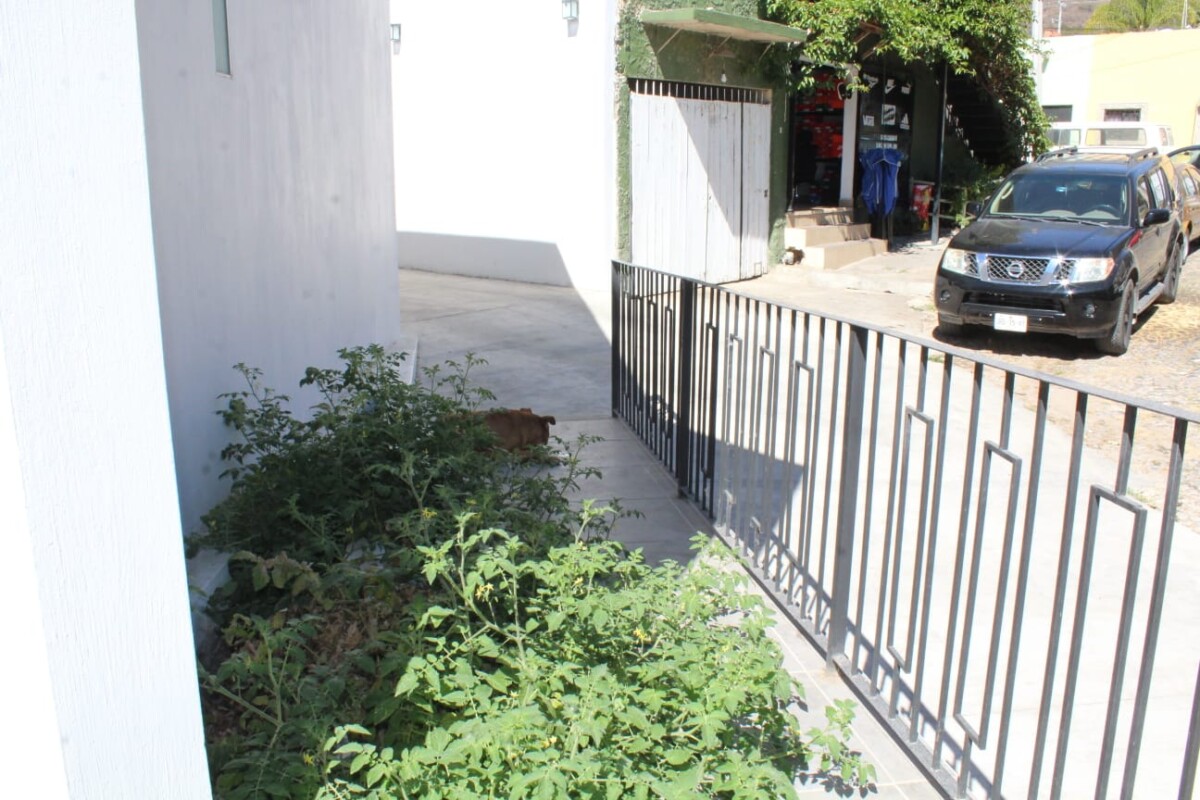
The passage of time and the lack of use has been noticeable on the façade, with the plants in the planter sprouting from their place.
«It must be of some use, and if there are people who need it at any given moment, of course it can meet their need. If today it remains unused after only one use, it is because wakes are done by everyone at home. It is a small town, and there are new things that take time for people to get used to using them. For example, there is the bicycle lane, which everyone rejected when it was announced, and many people we know use it today, both to walk and to ride their bicycles safely», added Ángel.
The acting head of the delegation, Maximiliano Macías Arceo, agreed with those interviewed, saying that in the town it is a habit to watch over and pray for the deceased in the homes of their relatives and that, although it has been offered on multiple occasions, people have preferred places closer to their homes.
He also commented that in the last few weeks the chapel has required minor repairs due to humidity and that this administration plans to furnish it.
Finally, he shared with the community that the chapel is available for anyone who wants to use it free of charge, they only have to contact the delegation to pick up the keys. The telephone number of the delegation is: 376 766 1760.
The wake chapel of Ajijic was built during the administration of Moisés Alejandro Anaya Aguilar (2018-2021) at a cost of 2,300,509.48 pesos (about US$110,300), financed by the Common Competitive Fund for Infrastructure (FOCOSI), as well as from the Secretariat of Infrastructure and Public Works (SIOP).
Its construction began in January 2021, and although it was announced that it would take eight weeks to complete, the chapel was handed over to the then Ajijic delegate Juan Ramón Flores in September of that same year, although without furniture. The chapel was used for the first time at the beginning of the new administration, headed by Alejandro de Jesús Aguirre Curiel.
Translated by Kerry Watson
Journalists from all over the country unite to demand justice
The United Nations Educational, Scientific and Cultural Organization (UNESCO), ruled that Mexico is the most dangerous country in the world to practice journalism, even more so than Iraq. Photo: Courtesy.
Héctor Ruiz Mejía (Chapala).- jJurnalists all over Mexico demonstrated last Tuesday 25th with «rage and indignation» to demand justice from the Mexican Government, reacting in part to the the murder of TV jouralist María Lourdes Maldonado Alconada
Lourdes Maldonado, who was shot in the head outside her home in Tijuana on January 23rd, was the third journalist to become a victim of violence in 2022, along with Margarito Martínez Esquivel and José Luis Gamboa.
Journalists from all over the country demonstrated in 28 different public rallies in 23 states, including Jalisco, to demand justice to practice the profession in Mexico.
They condemned the 148 murders of people dedicated to the profession of communication from 2000 to date, the precarious working conditions, and the government’s inability to guarantee their right to freedom of expression.
The demonstrators recalled Lourdes Maldonado, who notified the state and federal governments that she «feared for her life» after winning a labor lawsuit against Jaime Bonilla, former governor of Baja California. Before she could celebrate the victory, she was assassinated.
This protest highlighted the government’s lack of response and capacity to guarantee the safety of journalists in Mexico. It called attention to the journalists who have been murdered, raped, disappeared and forced to be displaced from their homes for the simple act of reporting.
The group Comunicación e Información de la Mujer (CIMAC), an independent organization of journalism and investigation with a feminist perspective, said that every 36 hours, a woman is a victim of violence for practicing journalism.
«The murder of a woman journalist should touch the most sensitive fibers of all social levels, of a place where the social fabric has been broken,” proclaimed the protesting journalists.
Finally, they also demanded regulation from government authorities and the business sector. They want prompt and effective reaction strategies that «allow us not to die in the attempt to practice our profession.”
The conditions in which most journalists throughout the country work are precarious, and they stated that too many media «pocket millionaire profits» and described the conditions as exploitation.
Translated by Nita Rudy
Man arrested in Ajijic for drug possession
Substance found during a search.
José «N» was arrested after being found with packages of the drug known as «crystal.» The accused was intercepted in the streets of Ajijic for a search on Saturday, January 22.
The accused was walking along Hidalgo and La Loma streets, when the officers of the State Security Secretariat noticed an evasive attitude of the 24 year old, so they conducted a search and found seven packages of narcotics.
The young man was handed over to the agent of the Public Prosecutor’s Office, in the area of Narcomenudeo of the State Attorney General’s Office, to continue with the pertinent investigations.
Pickpockets caught on video in Jocotepec
The video shows a woman, who was wearing glasses on her head, and another woman accomplice wearing a striped T-shirt.
Editor. – A business that sells lamb meat in the municipality of Jocotepec has accused two women of being pickpockets, as they were seen stealing items from customers on the establishment’s security cameras.
The video shows a woman, who was wearing glasses on her head, and another woman accomplice wearing a striped T-shirt.
Two videos and an image were shared on Facebook on January 23, in which two women can be seen robbing customers of their belongings without them noticing.
Accompaning the video was a text warning citizens that «these old women work as a team to steal from you. They stole from customers at my business. If you visit any businesses here, be careful. These women are two-legged “rats’ ‘ (a colloquialism for thieves).
The videos were captured in an establishment at the edge of the Guadalajara-Morelia highway, just before the Jocotepec crossroads.
Translated by Colleen Beery
Relocation of street vendors in Jocotepec
The merchants were relocated to the interior of the Municipal Market. Photo: Héctor Ruiz.
Héctor Ruiz Mejía: The street vendors who formerly marketed around Morelos and Josefa Ortiz de Domínguez streets in downtown Jocotepec have all been relocated. The merchant community met with the municipal president, José Miguel Gómez López, in a last attempt to prevent them from being dispossessed of their original work spaces, but the mayor remained unyielding.
As of January 25, merchants who were able to find a place inside the Morelos Market were relocated. However, during this first week, the change has not been beneficial in the eyes of the vendors. Sales were directly impacted, with the vendors who were relocated to the upper floor seeing a decrease of up to 85 percent.
«At this hour I would have sold 400, 450 pesos and right now, you see, I have only sold a bag of nopales, only 15 pesos», said one of the merchants who preferred to remain anonymous. Like other vendors, she said she did not know how to support her family.
Who will go upstairs for a bag of nopales, a handful of guamúchiles or a kilogram of onions, is the question asked by some of the merchants who for many years sold their products in the streets surrounding the market. Although an elevator was installed in the Mercado Morelos to encourage people to visit the second floor, it is not operating.
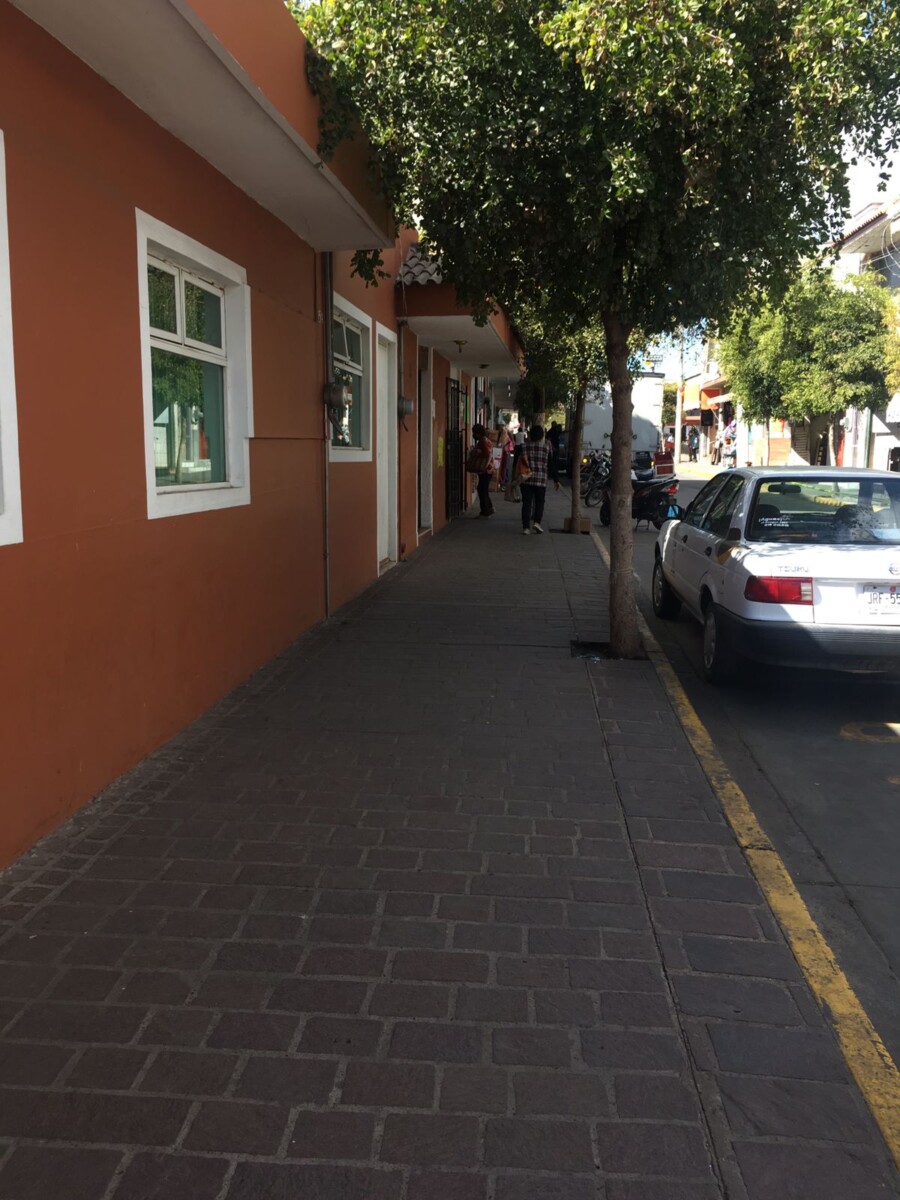
According to those affected, sales decreased by up to 85 percent during the first week. Photo: Héctor Ruiz.
Some merchants have stopped selling in the area, like those who have set up their «little stall» outside their house on 499 Morelos Street in Nextipac. At their advanced age, climbing the stairs every day with their merchandise would be impossible. They are not alone. Other vendors commented «It has caused us more work to climb every day with all our heavy goods.»
Merchants who could not find a place inside the Market have seen the biggest drop in sales. They have been relocated to the small square of «La Campana», at the junction of Morelos and Independencia streets where they say «not even the flies can stop.» They say they will try to endure the situation as best they can, in the hope that, with the passage of time and the force of habit, their former customers will come to the new facilities.
Meanwhile, since the relocation, the Government of Jocotepec has begun the work of beautification to improve the town’s image. Constant piles of garbage left by the irregular collection contribute to the problem.
Translated by Elisabeth Shields
The first inclusive sports team in Chapala is established
In blue, CODE Jalisco representative, next to her Tito López and his wife, a team volunteer. On the right, Francisco Gutiérrez, director of COMUDE (Municipal Sports Council) Chapala and a member of the ‘Chapala Inclusive Team’.
Jazmín Stengel (Chapala).- Well-known athlete Ernesto López González fulfilled a promise with the formation of the first «inclusive sports team» for people with disabilities in the municipality of Chapala.
Ernesto, or “Tito” as he is better known by his friends, announced at a press conference on January 24 in the La Cristianía Park auditorium, the creation of his long-awaited sports club for people with disabilities, endorsed by the State Council for the Promotion of Sports (CODE) Jalisco.
The purpose of this club is to motivate people with disabilities to «be encouraged to get out of their homes and join us,» said Tito Lopez. Organizers will knock on doors in each neighborhood to invite those who qualify. Open registration will be at the offices of COMUDE Chapala, Plaza de Toros, at Privada Francisco I. Madero 507, Chapala.
«People with disabilities tend to enter a state of comfort when other people limit them, in addition to the lack of adapted recreational spaces in the municipality,» explained López González.
The Municipality of Chapala pledged to provide transportation for the athletes to get to future competitions, as well as provide needed items. Another promise is to replace the current athletic track in La Cristianía Park with a professional one with accommodations for people with disabilities.
At present, there is a team of approximately 15 people who will compete in athletics for the blind, soccer for amputees, and cyclists with hand pedals and manual propulsion chairs. Swimming will be added once the pools of the Parque de La Cristianía are rehabilitated.
Since the athletes are still beginners and need to be trained, the club will start with purely recreational activities, such as internal and inter-municipal competitions. Once the athletes are ready, they will look for ways to promote their sporting careers through CODE Jalisco programs. Resources for the team are expected to be obtained through private donations or foundations.
Tito assured that he wanted to «help teach them to fish, …we want them to be self-sufficient. But, for that, we need them not to hide», said the athletics coach who wants to see his disciples at the highest levels of Mexican sport.
Translated by Nita Rudy
Popular Ajijic mural gets a facelift
José Durán retouching of his iconic mural on Morelos Street in front of the Malecón.
Sofía Medeles – Based on the number of tourist photos, one of the most recognized spots in Ajijic is the corner of Morelos at its intersection with Del Paseo; right in front of the pier. Murals and reliefs by José Durán, Javier Zaragoza, Ramón Heredia and Jesús López Vega attract throngs of picture-snapping tourists and locals daily.
Recently, the popular Ajijic Tango restaurant moved to this spot and asked the artists to maintain their murals, among them, José Durán who painted the landscape on the building. After 13 years, his idyllic scene which depicts the daily life and customs of Ajijic was finally retouched.
José Durán’s creation is now finished and in it you can see scenes of Colón Street, a tianguis that was located on Parroquia Street, and a couple listening to musicians sitting on the iconic tree of the six corners.
Next to it, on the same property, there is a mural by Javier Zaragoza, a relief by Ramón Heredia, and on Del Paseo Street, a mural by Jesús López Vega, which is also being restored.
Translated by Patrick O’Heffernan
After six months, Ajijic’s Tourist Information Booth will open its doors
The Tourist Information Booth was placed in August 2021, and is located in the Parque de la Amistad, on Ajijic’s Malecon. At its side there is a map with points of interest in the town.
Sofía Medeles –The Tourist Information Booth on the Ajijic boardwalk will finally open its doors, more than six months after its installation in August 2021, according to the person in charge of the Ajijic office, Maximiliano Macías Arceo.
Chapala President Alejandro Aguirre Curiel will announce the name of the person who will staff the booth on February 1. The booth information employee, who was supposed to be hired last August, will be bi-lingual.
Macías Arceo said, «The booth staff will not only provide tourist information about Ajijic, but about all the delegations, as well as the municipal capital of Chapala. In addition, I am looking for brochures to be available to illustrate the information to the tourists.”
The booth ‘s cost of 260 thousand pesos paid from the 1,333,333 pesos allocation that Ajijic received from the State as a Magical Town. Local residents took to online discussion groups to point out that the booth is small and similar to those available in furniture and department stores at a better price.
Translated by Patrick O’Heffernan
Macías Arceo kicks off street light repair in Ajijic
Maintenance of street lights on Álvaro Obregón street. Photo: Facebook of the Ajijic Delegation.
Sofía Medeles – Without waiting for public lighting personnel from Chapala, the person in charge of Ajijic’s office, Maximiliano «Max» Macías Arceo and local personnel got down to work to put an end to Ajijic’s gloom by maintaining and repairing the street lights in different parts of the town.
Macías Arceo said that many of the problems of out-of-service street lights were simply minor repairs; only a few were badly damaged.
«Some were very neglected, but others just had simple things, such as a bad connection. To solve this problem, without having to wait for the Chapala President Alejandro Aguirre Curiel to authorize county staff, a small crew of two people was formed in Ajijic which will have two days assigned for the maintenance», said Macías Arceo, who added that he prefers to order the material and safety equipment to speed up the repairs, instead of waiting for personnel from the City Hall to have time to start work.
He said that the only thing they need to be in good working order all the time is continuous maintenance.
The repaired lights were on Revolución and Álvaro Obregón streets, the Villa Nova truck stop, Encarnación Rosas by the high school area north of town, Paseo del Prado street in La Floresta, Río Lerma and Del Paseo west of town in the Seis Esquinas neighborhood , and in the area known as La Cruz, between Marcos Castellanos and Nicolás Brazo streets by the beach
«In the area of La Cruz, everything was dark — it looked like a wolf cave since none of the light fixtures in that part of town worked. The worker who was in charge of fixing it told us that the cable was only broken, and when we reconnected it, all the lamps on that street came on. The residents of that area were very grateful to us, because they told us that they were afraid to go out at night because of the darkness,» said Macías Arceo.
Macías Arceo said that for more complicated works, they will look for at least one person from public lighting to accompany the workers of the delegation to supervise them and to continue to follow up on the reports. He claimed that he is aware of the lack of street lights on streets such as Villa Lucerna, P. del Prado, etc., and said that he is waiting for the opportunity to speak with the person in charge of public works to ask for a budget to place the poles and lights that are needed.
Translated by Patrick O’Heffernan
Relocation of street vendors in Jocotepec leads to complaints, reduced sales
The merchants were relocated to the interior of the Municipal Market. Photo: Héctor Ruiz.
Héctor Ruiz Mejía: All the street vendors who previously worked around Morelos and Josefa Ortiz de Domínguez streets in downtown Jocotepec have been relocated to the interior of the Morelos Market, fulfilling the municipal mandate.
The relocation was ordered by the government after a meeting between Jocotepec President José Miguel Gómez López and the merchant community failed to reach an agreement that would allow the vendors to remain on the street. Gómez López was adamant that all vending now takes place in the refurbished market.
According to vendors interviewed by Laguna, the January 25 morning move to the interior of the Morelos Market was terrible for sales for the handful who made the move. They complained that change of location had a direct impact on their revenue, reducing it as much as 85% in some cases.
«At this hour I would have sold 400, 450 , and right now, you see I have only sold a bag of nopales, only 15 pesos», said one of the merchants who preferred to keep her name anonymous and, like the other vendors, said she did not know how to support the family that depends on her if this continues
“Who will go up (stairs) for a bag of nopales, for a handful of guamúchiles or for a kilogram»of onions, is the question asked by the merchants who for many years sold their products in the streets surrounding the market and made their customers’ purchases easy.
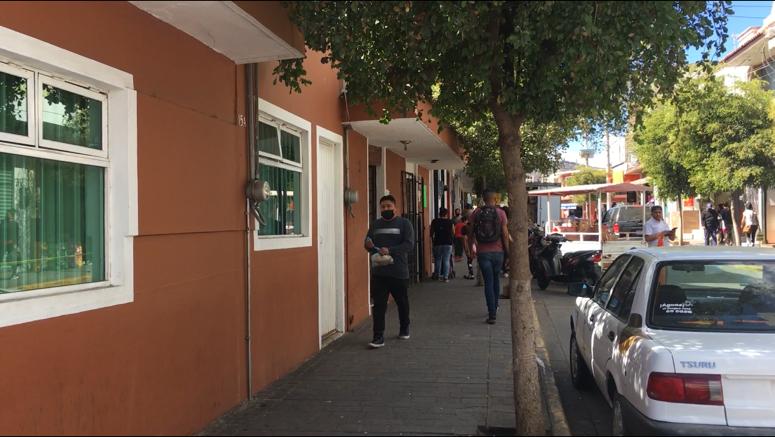
According to those affected, sales decreased by up to 85 percent during the first week. Photo: Héctor Ruiz.
Even though the new stalls designed for the merchants, which cost 7,500 pesos each, will not be charged to them, the vendors are looking for at least a support plan from the City Hall to ease them through this first phase of the change. However, such support has not been confirmed, which is why some of the vendors have been reluctant to move to the new space. The elevator installed after the remodel is not working, exacerbating the problem.
Some merchants opted to stop selling in the area, such as those who preferred to set up their vending stall outside their house on 499 Morelos Street in Nextipac, because their advanced age made climbing the stairs every day with their merchandise an impossible task.
The stairs have led to complaints from other merchants. Several told Laguna that «it has caused us more work to climb every day with all the product, it is very heavy».
The merchants who could not find a place inside the Market were hit even harder. They were relocated to the small square of «La Campana», a junction of Morelos and Independencia streets, which resulted in very low sales.
«Not even the flies can stop there», complained the vendors, who said that they will try to endure the situation as best they can in the hope that, with the passage of time and the force of habit, their former customers will come to their new facilities.
Meanwhile, since the relocation, the Government of Jocotepec began adding new signage to help rehabilitate Jocotepec’s urban image, damaged recently by the piles of garbage accumulated by the irregular collection service .
Translated by Patrick O’Heffernan
© 2016. Todos los derechos reservados. Semanario de la Ribera de Chapala

